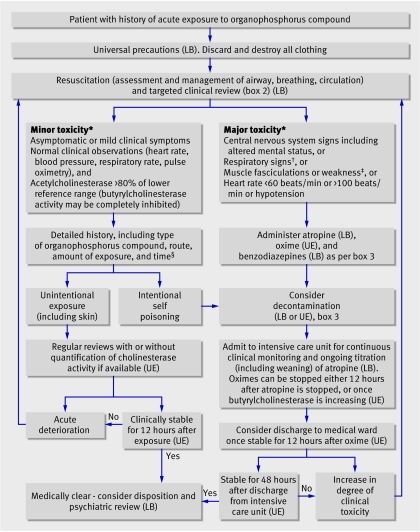Fig 2 Decision tree for management of patients presenting with history of acute organophosphorus poisoning.5 7 8 9 11 *Patients may have variable degrees of miosis, salivation, diaphoresis, urinary frequency, or lacrimation, which may assist in diagnosis of organophosphorus poisoning. Because these manifestations are not considered to influence outcome they are not included in this decision tree. †Assessment of respiratory status includes respiratory rate and depth, presence of adventitious sounds such as rales and rhonchi, presence of bronchorrhoea, and objective measurements of pulse oximetry, arterial blood gases, and forced vital capacity or forced expiratory volume in one second. ‡Muscle weakness: difficulty in mobilisation or reduced forced vital capacity on spirometry before development of paralysis and respiratory failure. §Caution with patients with a history of exposure to fenthion (or highly fat soluble organophosphorus compounds). Patients with fenthion poisonings are usually characterised by minimal or absent cholinergic symptoms for 24-48 hours, after which they develop increasing muscle weakness and respiratory failure

An official website of the United States government
Here's how you know
Official websites use .gov
A
.gov website belongs to an official
government organization in the United States.
Secure .gov websites use HTTPS
A lock (
) or https:// means you've safely
connected to the .gov website. Share sensitive
information only on official, secure websites.
